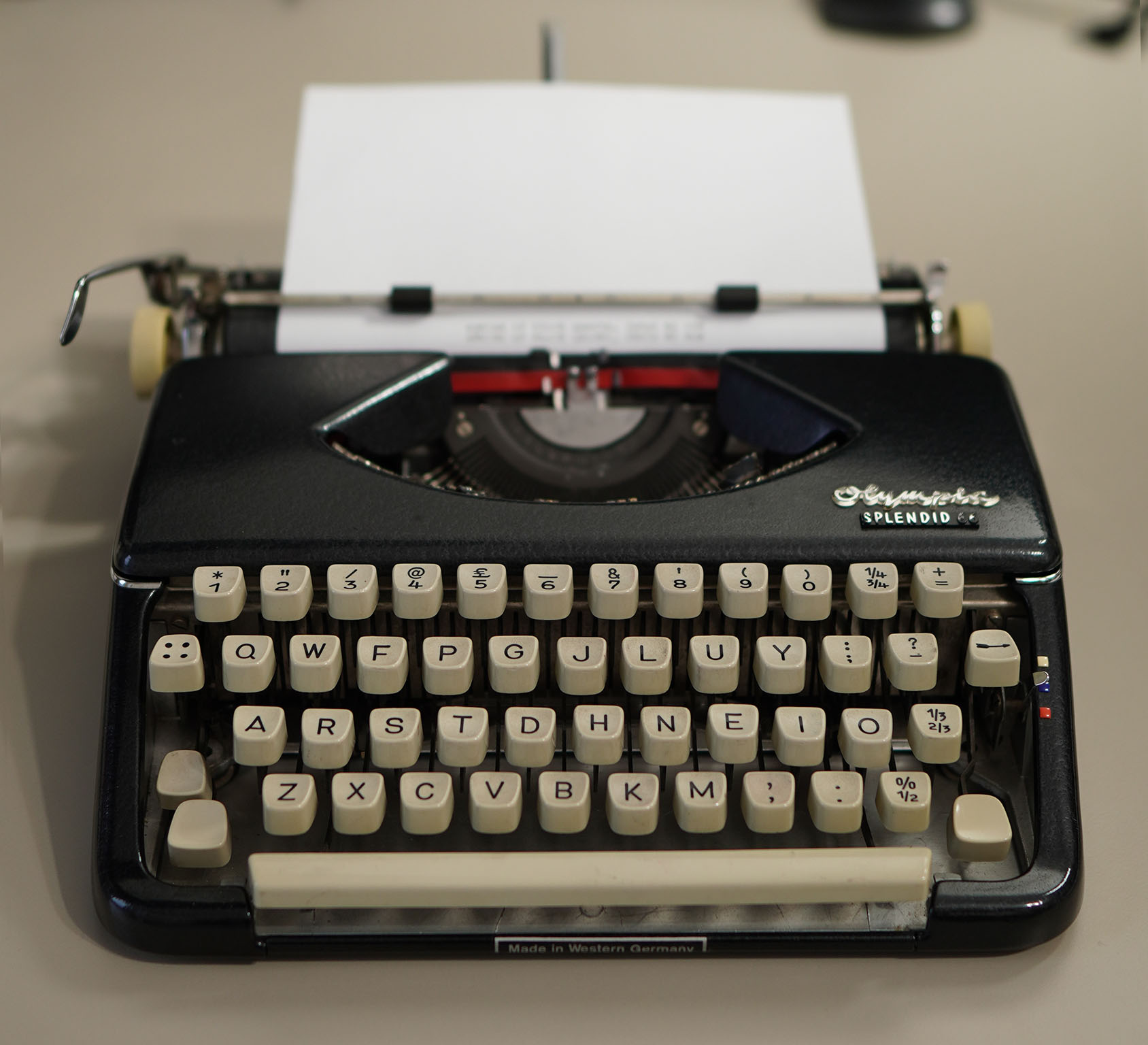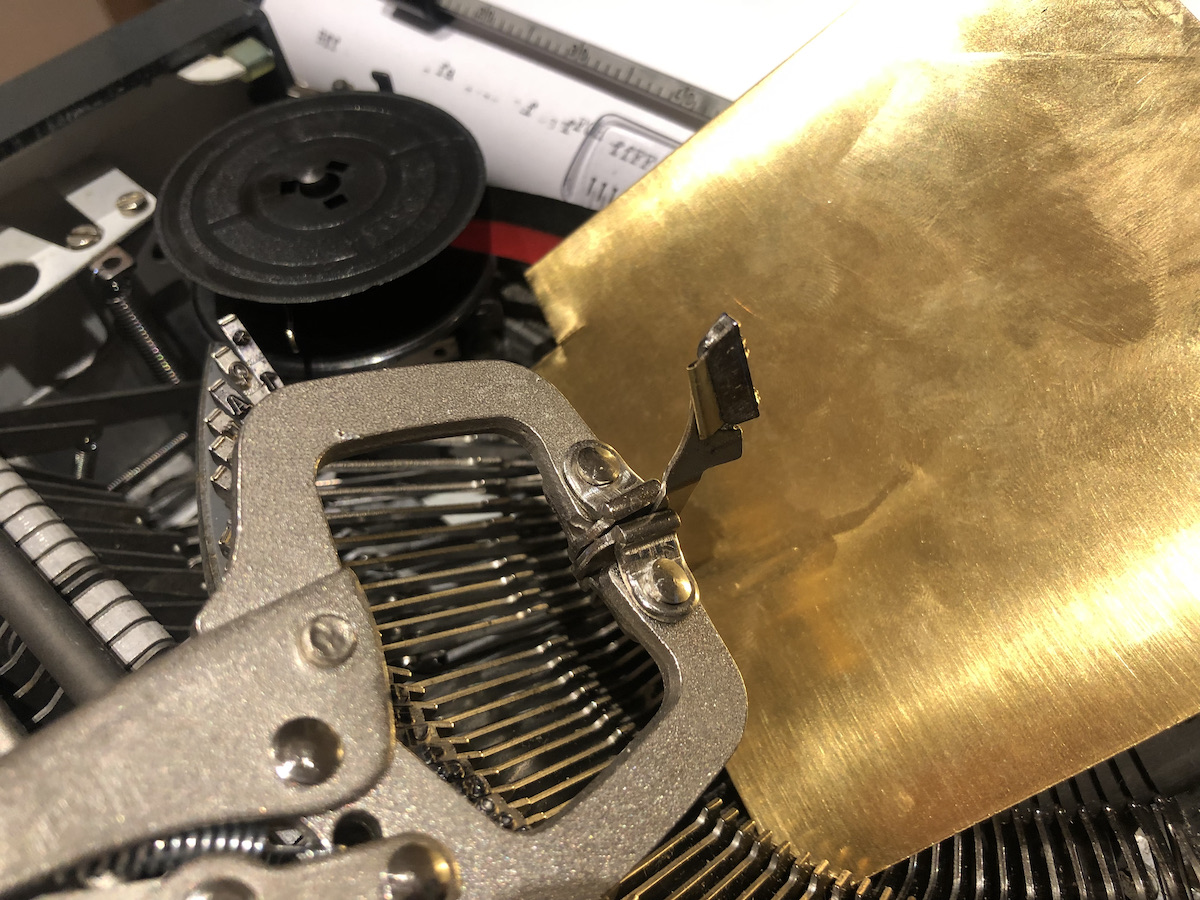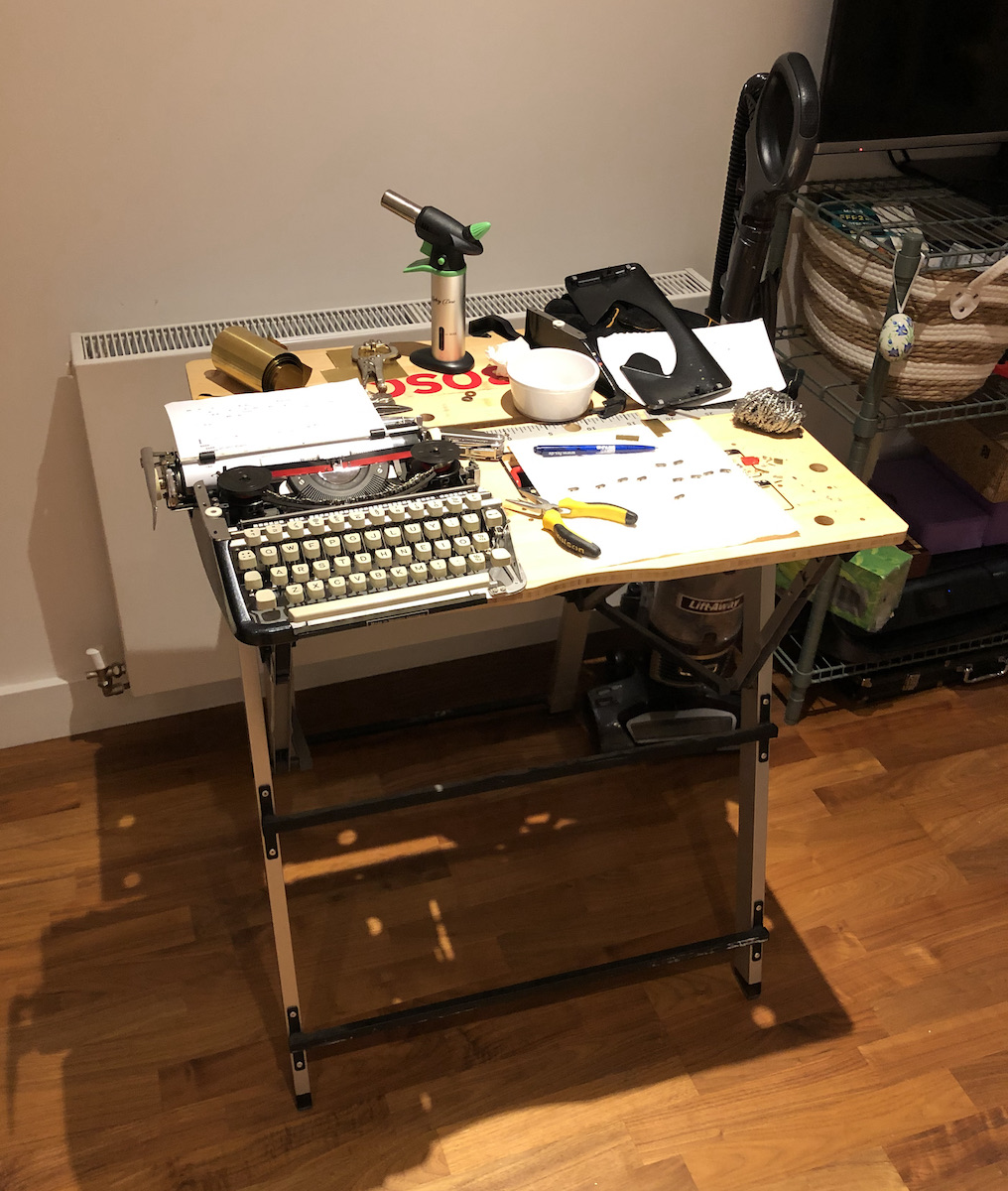Converting A Typewriter To Colemak
 Splendid!
Splendid!
As part of a larger project to reduce my dependence on modern technology and rebuild my attention span, I recently bought a typewriter. Keeping my phone away from myself as much as possible has made me happier so why shouldn’t it also work to replace my computer? The idea is to do my morning pages with it, maybe take it to the park with an idea and see what else can be typed on it. After spending some money on ebay, I fell in love with an Olympia Splendid 66. It’s a small and portable typewriter with a cool 60s aesthetic. The machine I bought is not the cleanest, smells of attic and had a broken margin release (that’s the key with the four dots that lets you type past the margins which you can set on the back of the typewriter) but overall it’s working fine.
This would be all I’d have to say on this project at this point were it not for the fact that for the last 15 years, I’ve been using Colemak, an alternative keyboard layout. I lost the ability to type on qwerty layouts a long time ago. Unfortunately, Colemak was invented in 2006, long after typewriters stopped being manufactured. Initially, I considered getting an electric typewriter and rewiring it. That would’ve been a fun project too but there’s something about going completely mechanical that appealed to me.
Luckily, the type slugs that carry the letters and characters are pretty small and are soldered onto the type bars that strike the paper when a key is pressed. This means it’s possible to desolder them and move them to a different type bar. When doing so, aligning them correctly so they strike the paper at the right angle for both upper and lowercase letters is pretty finicky. Apparently, there used to be jigs for that kind of repairwork but I couldn’t find any online. This reddit post contains a description of somebody who converted their typewriter to Dvorak, another alternative layout and who’s in possesion of such a jig.
I spent some time googleing around but eventually realised that I had to strike while my inspiration was hot and just decided to give it a go. This thread turned out to be the most useful with somebody suggesting is was possible to just do the replacement in place without removing the typebars (which I still haven’t figured out how to do) with some brass shims to hold the slugs in place before soldering. The picture below shows what that looked like.

This worked fairly well, the main problem I had was that when soldering, the type slugs would move as I touched them with my solder. Eventually, I figured out the right way to do it by having the solder touch the top of the typebar and have it flow down into the space between the slug and the bar. Still, it took me four attempts to get my ‘f’ slug in roughly the right place.
 My workspace
My workspace
The whole operation took me an extended weekend (it’s a bank holiday for the queen’s funeral in the UK today) and I’m pretty happy with the result. Most of the keys are pretty well aligned, the only two that stick out a little bit are ‘n’ and ‘j’ but I don’t mind the extra funkiness.

If you have a typewriter that you’re planing to make any similar modifications to, I’d love to hear from you. I can’t promise I’ll be of much help but I’m very interested to hear how other people approach this problem. Thanks for reading!